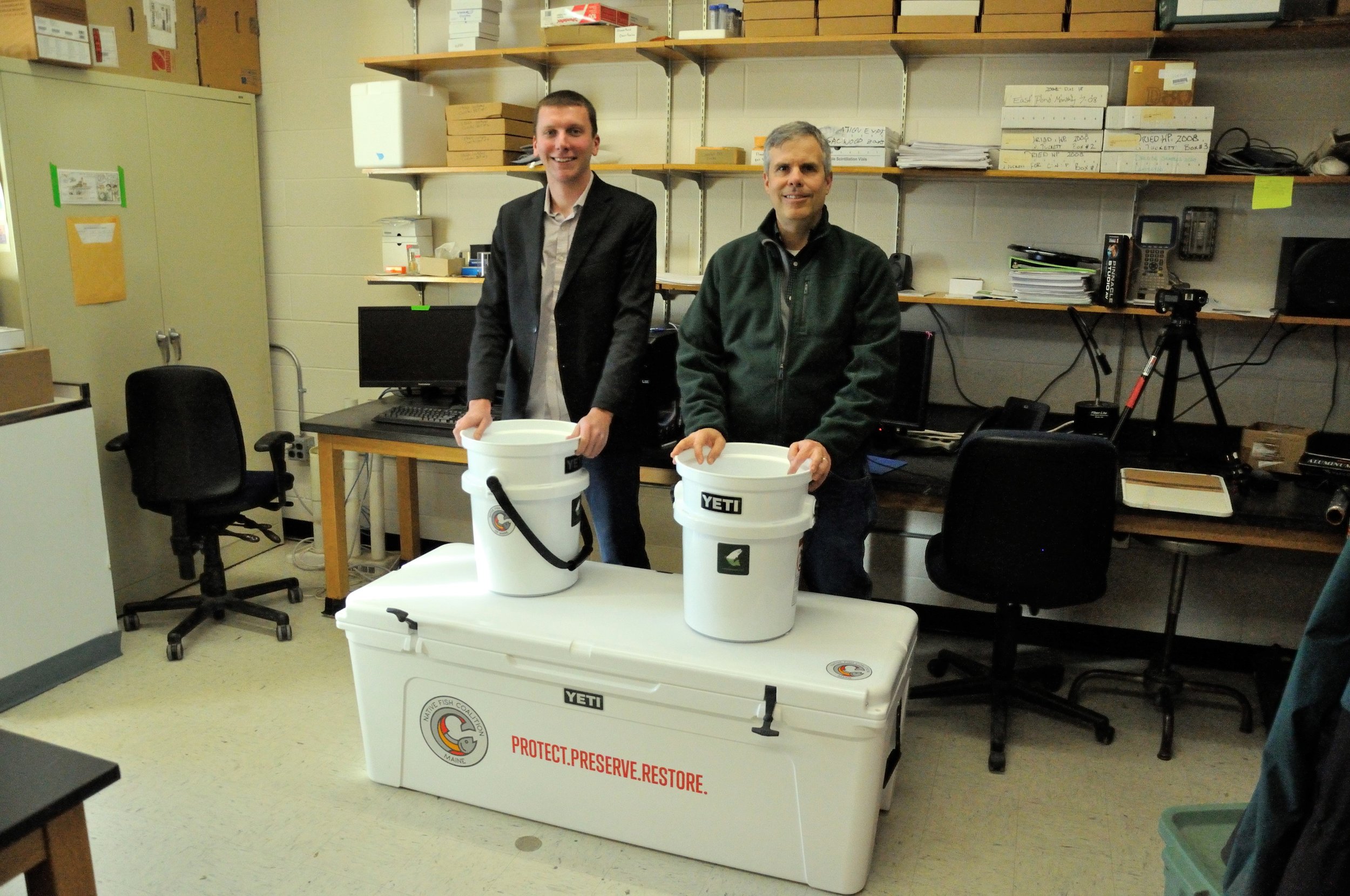Floods Pond Arctic Charr Study - Moving Water
Rare Arctic charr from Floods Pond in Maine.
While working with the University of Maine on the critically important ongoing Floods Pond Arctic Charr Study, we noted several things NFC could do to help improve the process while providing more protection for the fish.
After addressing fish holding and handling by obtaining a large Yeti cooler, two new buckets and two rubber-bag nets (long-handle for removing fish from the trap and pen, and short-handle for removing them from the holding tanks), we looked at how we were moving water between the lake and study area.
The process was manual (see below), and the need to keep the water cool and oxygenated to limit stress on the fish required folks be creative and both proactive and reactive. With two large holding tanks to fill and maintain, and the new Yeti cooler much larger than the old recovery tank, a "bucket brigade" didn't seem like the best option.
Note the floating water bottles in the holding tanks above. They are frozen and used to help maintain the water temperature in what were/are uninsulated tanks. While we have replaced the recovery tank with an insulated Yeti cooler, we have not replaced the holding tank and hope to do so in the future.
“Dragon slaying: When you see a problem, don’t walk around it, fix it, no matter how small.”
The Maine chapter of NFC decided to look into developing a portable pumping system that could be used to move freshwater from the lake to the study area to both fill and maintain the holding and recovery tanks. This will eliminate the need to carry buckets from the lake while making it easier to keep the water cool and oxygenated by replacing it as needed.
Maine NFC board members Larry Bastian and Brad Erdman, who is also the UMaine PHD student managing the study, recently went down to the pond to take some distance and elevation measurements to see what would be needed to automate the process of moving water between the lake and the study area.
They are working on a formal proposal that will include a system design, list of what we need to buy, and cost estimates. As soon as we have approved the concept we will start raising money to procure what is needed. And as noted above, we would like to get a second large Yeti to replace the holding tank (a $500 expense).
If you would like to help fund the infrastructure improvement project please click here












